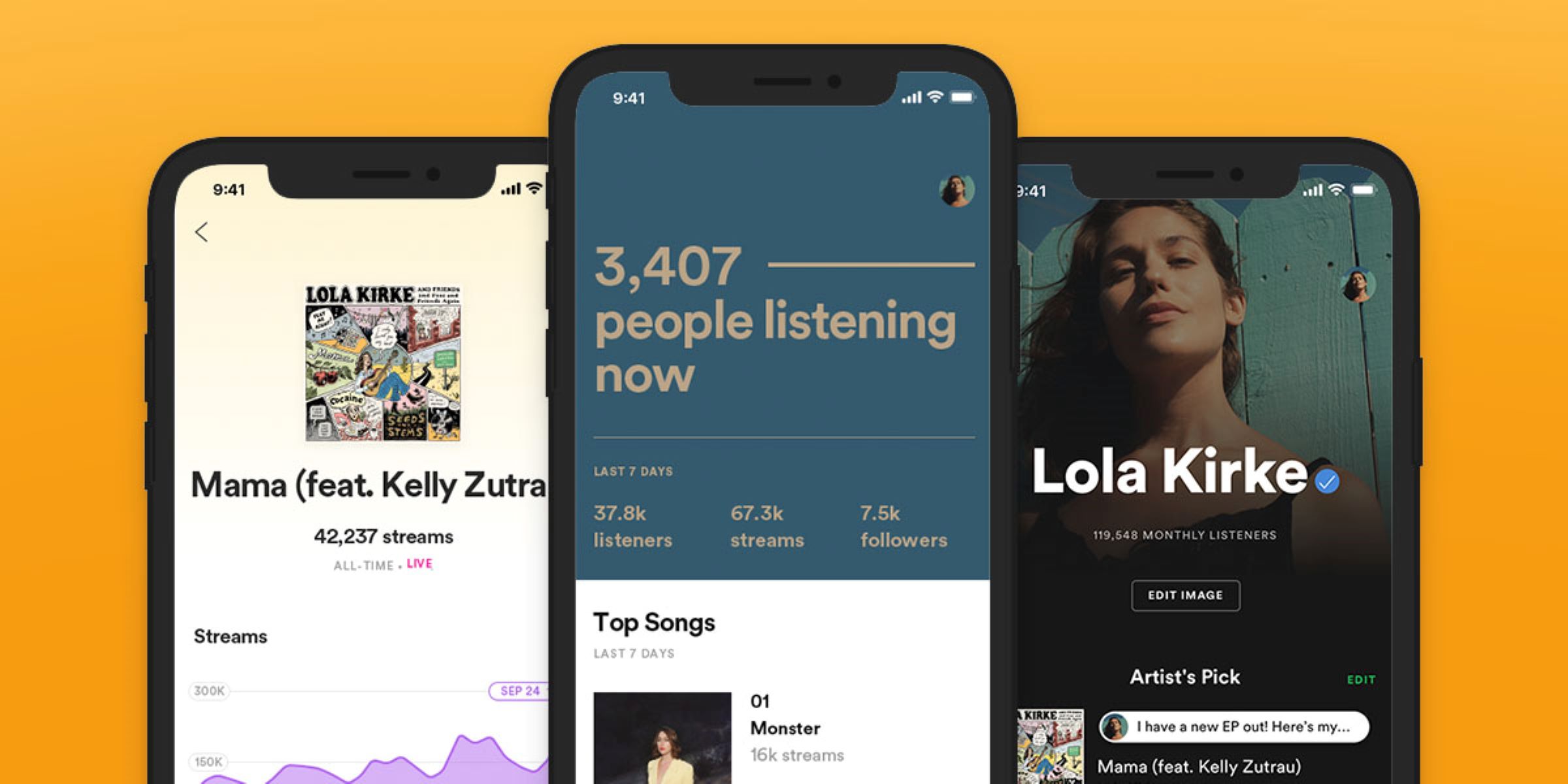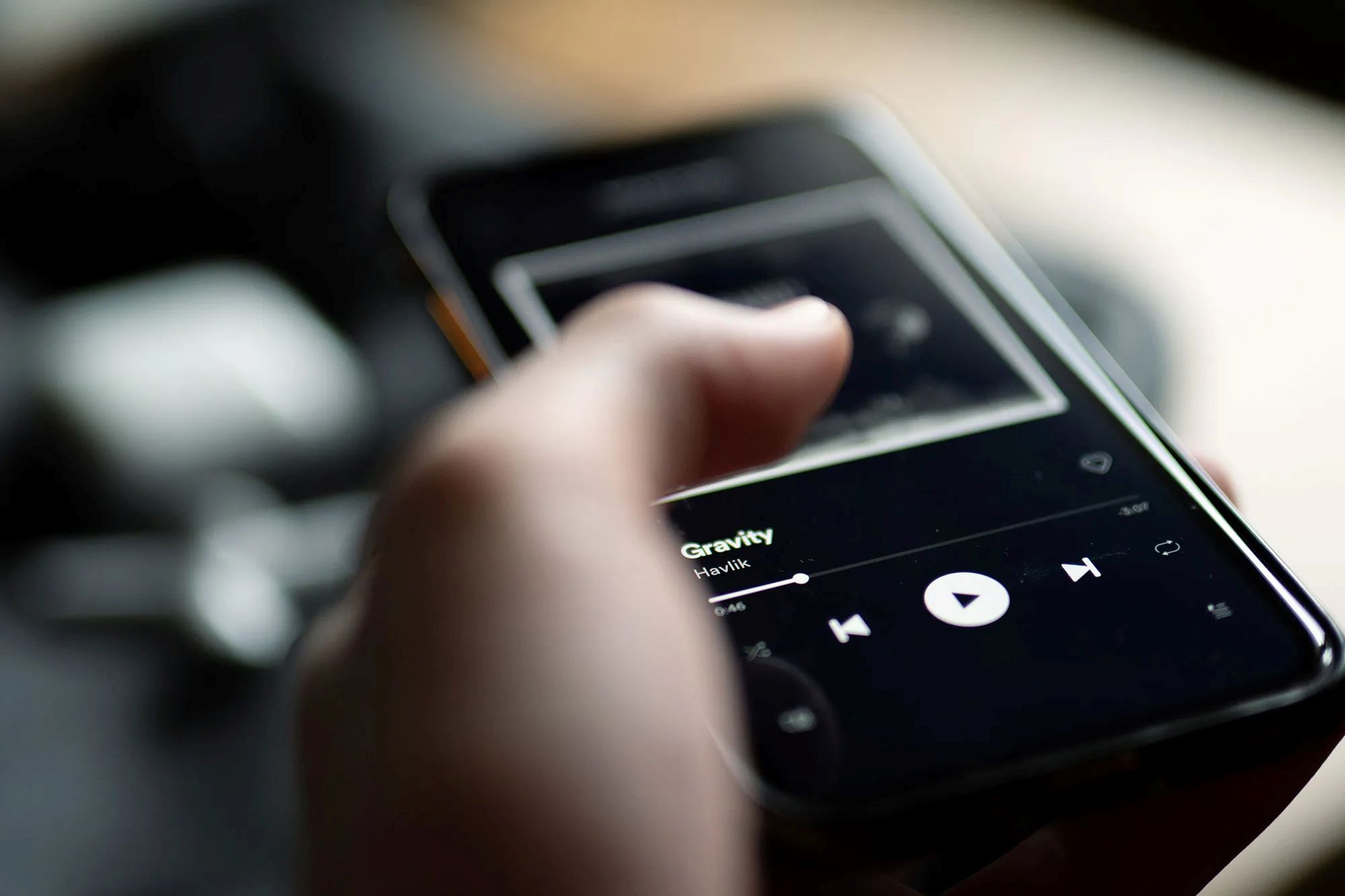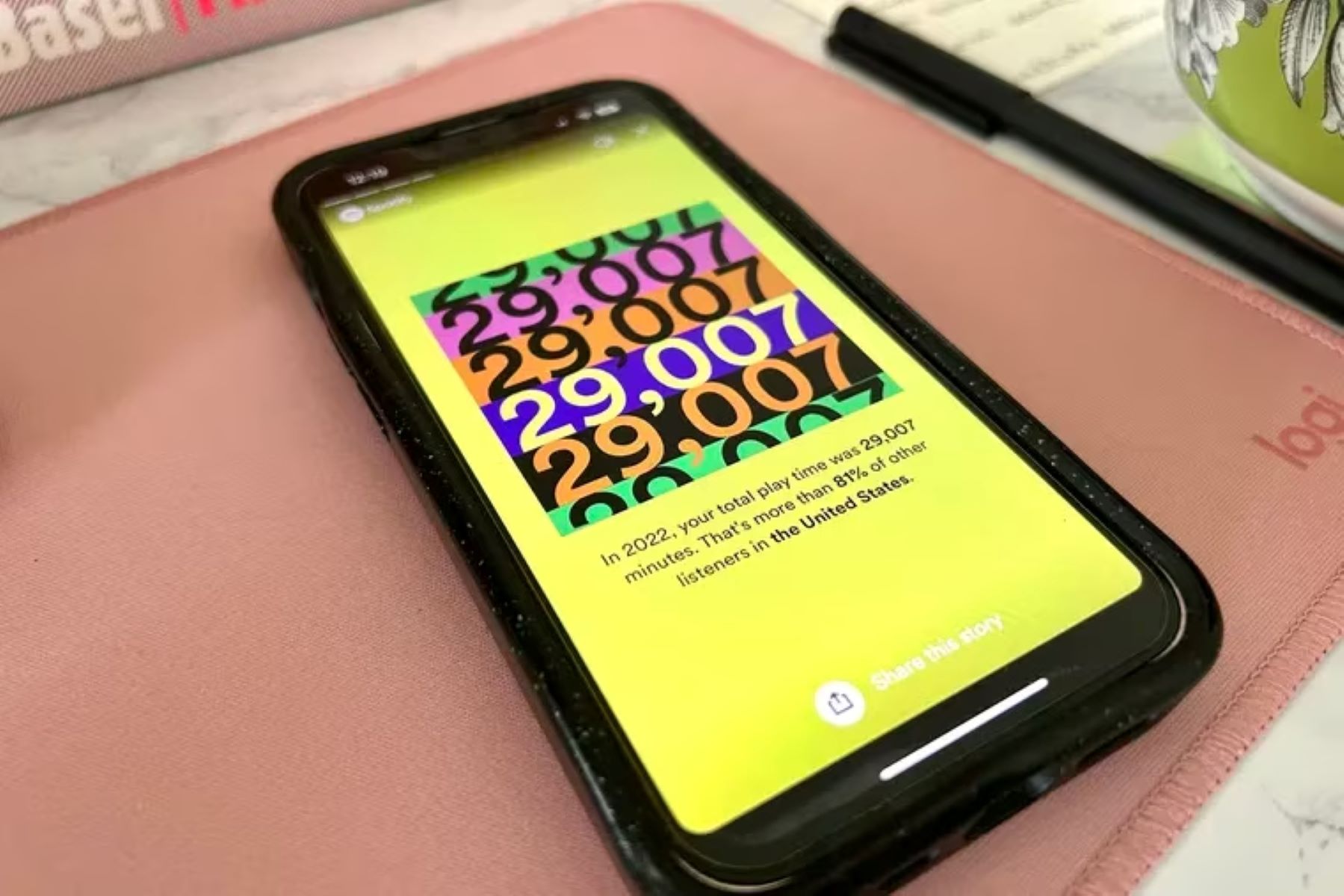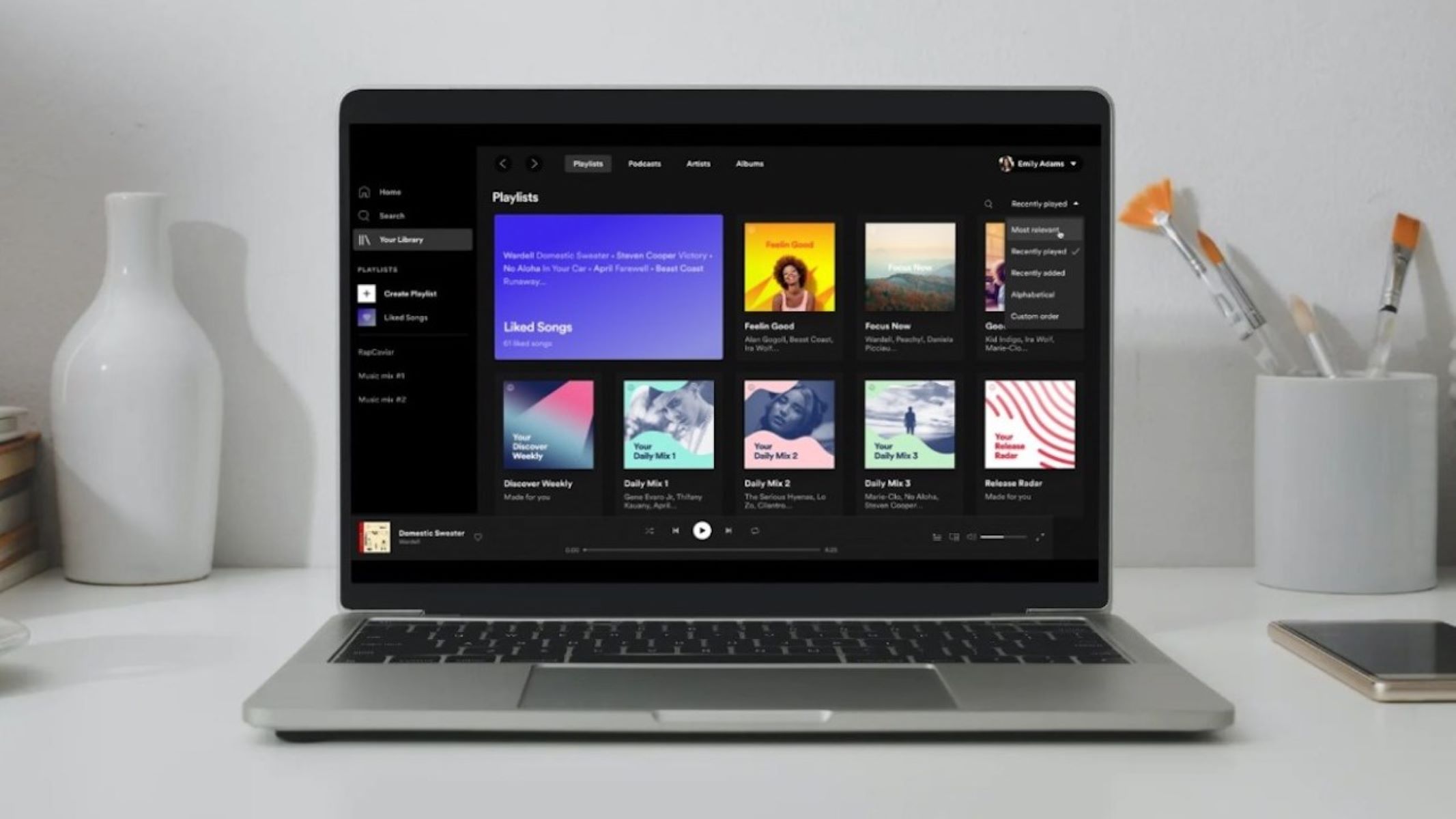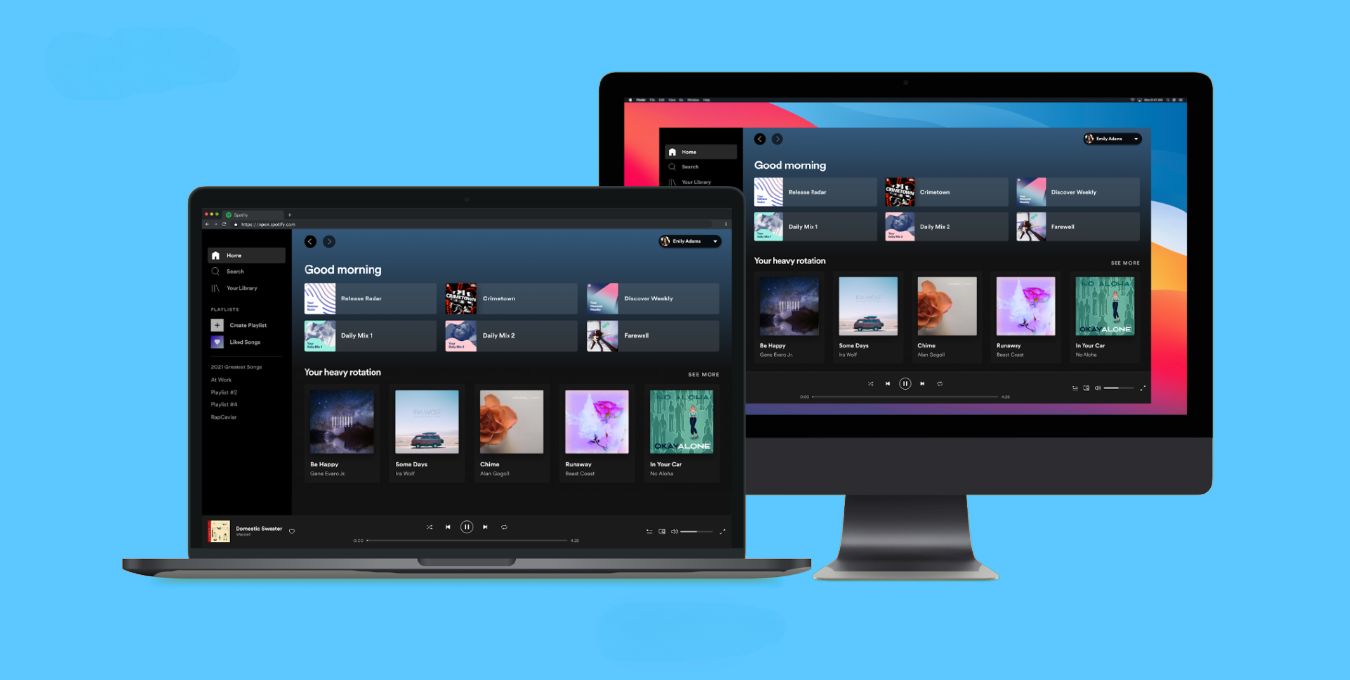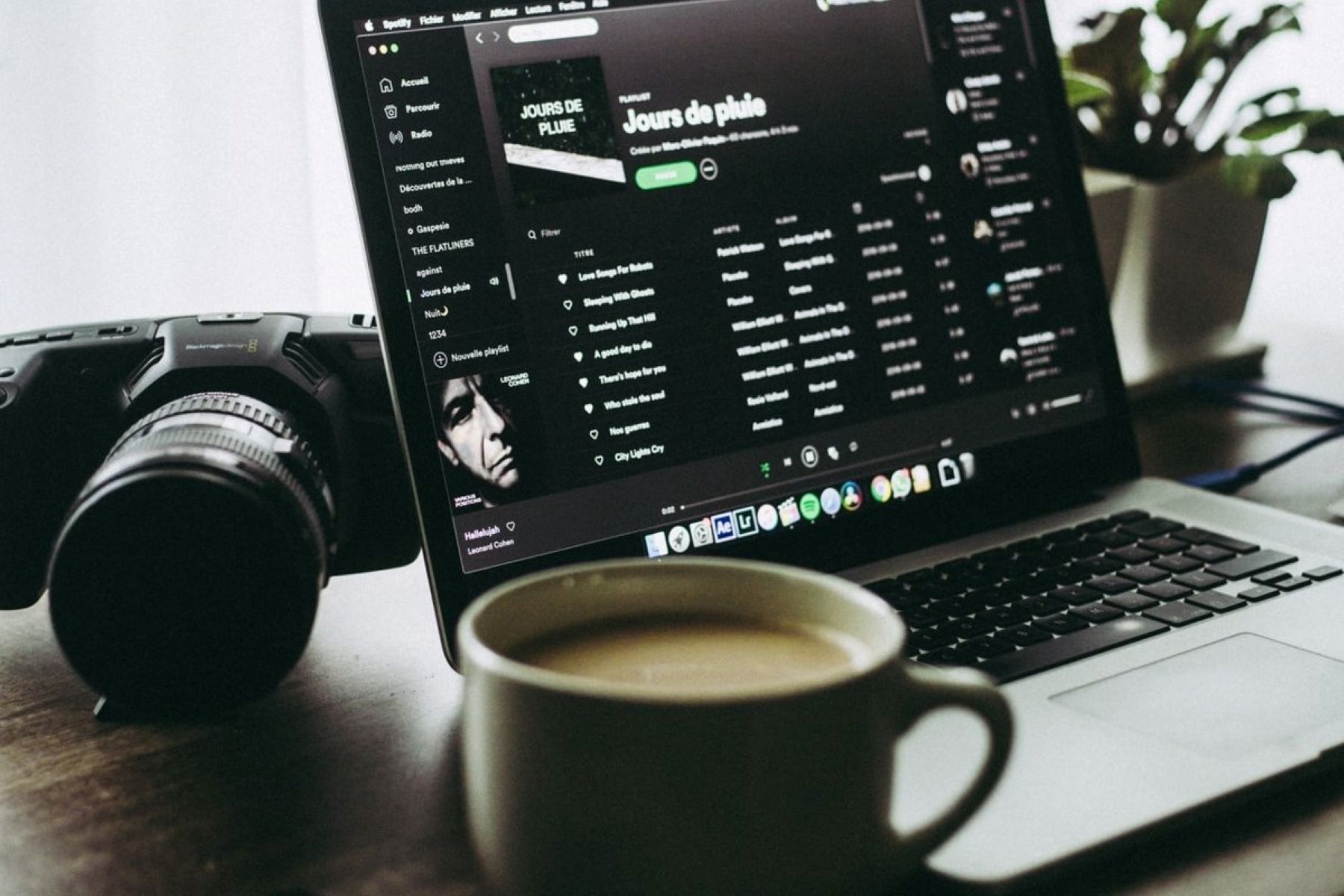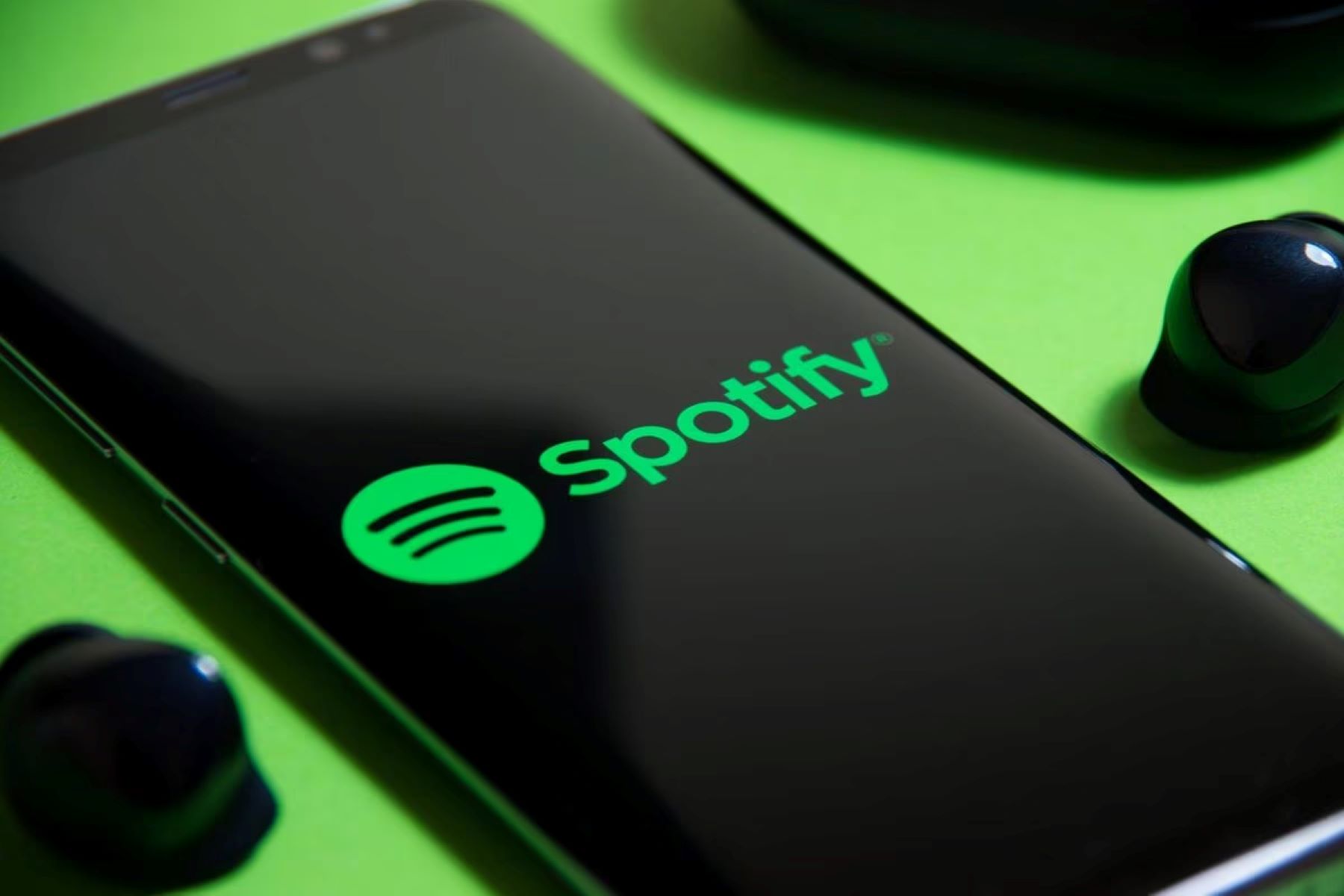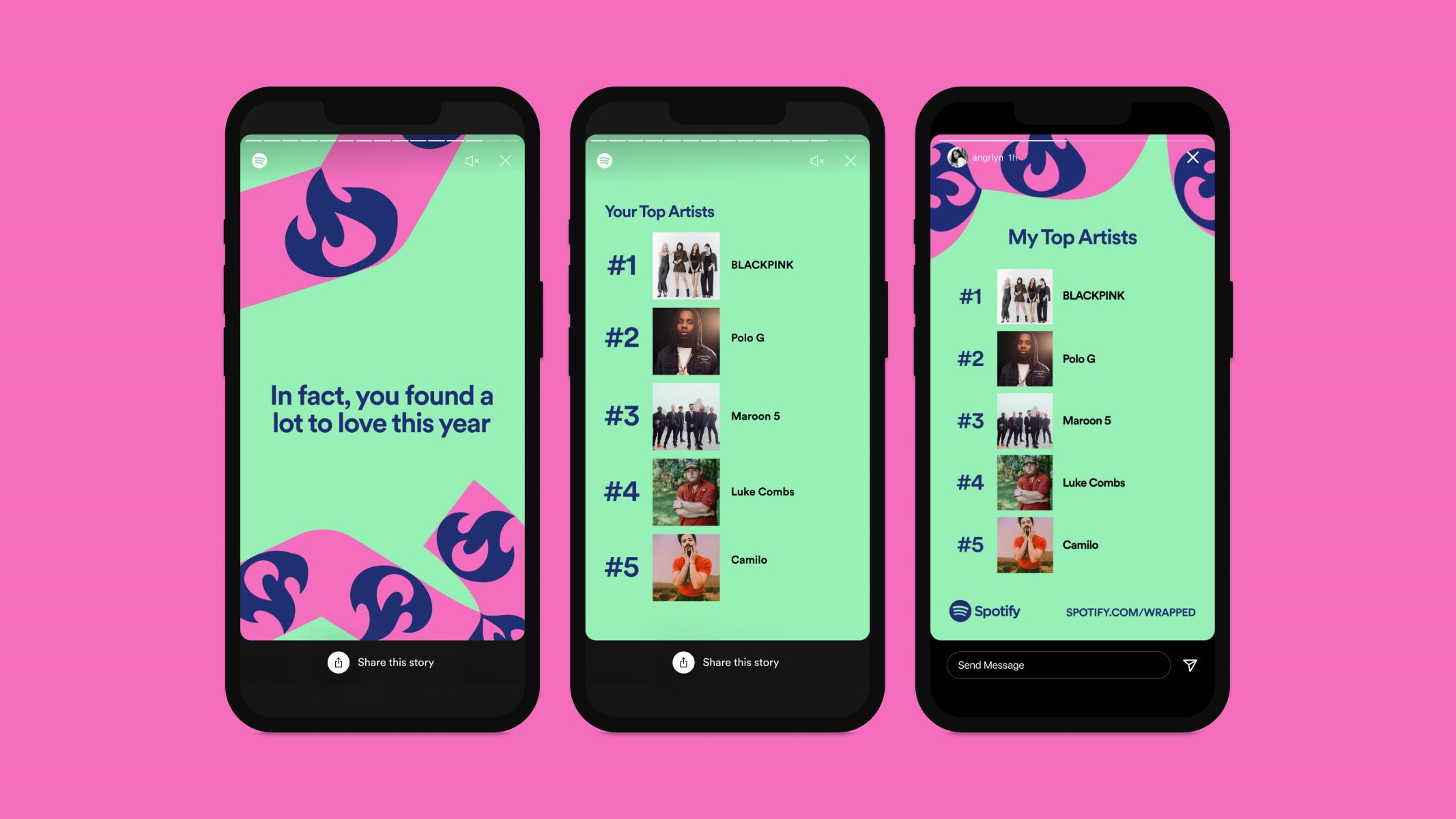Introduction
Spotify, the popular music streaming platform, has revolutionized the way we listen to music. With millions of songs available at our fingertips, it has become the go-to choice for music lovers around the world. But have you ever wondered if artists can see who listens to their music on Spotify? In this article, we will explore this question and delve into the inner workings of Spotify’s artist analytics.
Spotify provides a platform for artists to showcase their music to a global audience. Unlike traditional music distribution models, where artists rely on album sales or radio play to gauge their popularity, Spotify offers a unique opportunity to track and analyze listeners’ engagement with their music.
Artists often crave feedback and validation for their work, and knowing who listens to their music can be an essential piece of that puzzle. However, Spotify operates on a different model, where the focus is primarily on user privacy and data protection. So, can artists actually see who listens to their music on Spotify? Let’s find out.
To understand how Spotify works and why artists cannot directly see their listeners, it’s important to delve into the platform’s operating model. Spotify uses a combination of algorithms and user data to curate personalized playlists and recommendations for its users. While data is collected on listener behavior, including the number of streams, skips, saves, and shares, this information is not readily available to artists.
Spotify offers a level playing field for artists from all walks of life, regardless of their popularity or past success. It ensures that smaller, independent artists have an equal opportunity to be discovered by a wider audience. This means that even though artists might not have access to detailed listener demographics, their music still has the potential to reach millions of listeners around the world.
How does Spotify work?
Before we dive deeper into the question of whether artists can see who listens to their music on Spotify, it’s important to understand how the platform operates. Spotify is a streaming service that allows users to access a vast library of music, podcasts, and other audio content from various genres and artists.
When you open Spotify and search for a specific song or artist, the platform uses its algorithms to display relevant results based on your preferences and listening history. Spotify’s algorithms analyze factors like your previous listening choices, saved songs, playlists, and even the time of day to curate personalized recommendations that are tailored to your tastes.
By using an on-demand streaming model, Spotify enables users to access music instantly without needing to purchase individual songs or albums. This shift from physical media to streaming has transformed the music industry and provided a new avenue for artists to reach their audience.
Spotify offers both free and premium subscription options. Free users can listen to music but have to tolerate occasional ads, while premium users enjoy an ad-free experience and additional features like offline listening and unlimited skips. The revenue generated through subscriptions and advertisements is then used to compensate artists and rights holders for their music.
One of Spotify’s key features is its ability to create playlists and share them with others. Users can create their own playlists or follow curated playlists based on genres, moods, or themes. These playlists often gain popularity and have the potential to expose artists to a wider audience.
Spotify also provides a social aspect, allowing users to follow friends, artists, and influencers. This creates a sense of community and makes it easier to discover new music through shared recommendations and what others are currently listening to.
Overall, Spotify’s user-friendly interface, personalized recommendations, and vast library of music make it a top choice for music enthusiasts worldwide. Now let’s explore whether artists can see who listens to their music on this platform.
Can artists see who listens to their music?
One of the frequently asked questions by artists on Spotify is whether they can see who listens to their music. Unfortunately, the answer is no. Spotify does not provide artists with specific data about individual listeners, such as their names or personal details.
Spotify places great emphasis on user privacy and data protection. It has strict policies in place to ensure that listeners’ information remains confidential. This means that artists cannot directly access the identities of their listeners through the Spotify platform.
While artists cannot see who specifically listens to their music, Spotify does provide them with some valuable insights through its artist analytics tools. These tools offer artists a broad understanding of their audience and how their music is performing on the platform.
Artists can access metrics such as the total number of streams, the geographical locations of their listeners, the number of times their music has been added to user playlists, and the overall popularity of their tracks. This data helps artists gauge the overall reach and engagement of their music on Spotify.
Additionally, Spotify provides artists with a “Fans Also Like” feature, which suggests similar artists to listeners based on their listening habits. This can be an indication of how their music resonates with a particular audience and who their potential fans might be.
While artists may not have access to specific listener data, the overall feedback and engagement they receive through the number of streams, saves, shares, and playlist additions can give them a sense of their music’s popularity among Spotify users.
It’s important to note that Spotify’s focus on user privacy and data protection is what helps maintain trust between the platform, listeners, and artists. By safeguarding user information, Spotify ensures that listeners can enjoy their music without concerns about their privacy being compromised.
Now that we understand why artists cannot see who listens to their music on Spotify, let’s dive further into the privacy policies and user data protection measures implemented by the platform.
Why can’t artists see who listens to their music on Spotify?
Spotify operates under a privacy-focused approach, aiming to protect user data while providing a seamless music streaming experience. This commitment to privacy is a core reason why artists cannot directly see who listens to their music on Spotify. Here are a few key reasons behind this:
User Privacy: Spotify places a high value on user privacy and respects the confidentiality of its listeners. It prioritizes safeguarding personal information and follows stringent data protection measures. By not providing artists with direct access to listener data, Spotify ensures that listeners’ privacy remains intact.
Legal Considerations: Due to various global privacy laws and regulations, such as the General Data Protection Regulation (GDPR) in the European Union, Spotify must adhere to strict guidelines to protect user data. These regulations impose limitations on what data can be collected and how it can be used, making it impractical for artists to have direct access to individual listener information.
Platform Neutrality: Spotify aims to provide a level playing field for all artists, regardless of their popularity or level of success. By not providing artists with specific listener data, Spotify ensures that all artists have equal opportunities to reach and engage with their audience. This approach promotes fairness by preventing artists from exclusively targeting listeners based on personal information.
Data Security: With millions of users and vast amounts of data, Spotify has an obligation to protect the information it collects. Granting artists access to listener data increases the risk of data breaches and unauthorized access. By limiting access to listener data, Spotify can maintain a secure environment for its users and artists alike.
User Trust: Trust is crucial in maintaining a strong user base. By prioritizing user privacy and not sharing listener data with artists, Spotify builds trust with its users. This trust is essential for listeners to continue enjoying music on the platform without concerns about their personal information being compromised.
While not being able to see individual listener information might be disappointing for some artists, it’s important to understand the reasons behind this approach. Spotify’s focus on user privacy, legal compliance, and maintaining a fair and secure platform creates a trusted environment for both listeners and artists.
Now, let’s explore how artists can gain insights about their audience and track their music’s performance on Spotify through the available analytics tools.
Spotify’s privacy policy and user data protection
Spotify takes user privacy and data protection seriously, implementing robust policies and measures to ensure that listeners’ personal information is safeguarded. The platform’s privacy policy provides transparency about how user data is collected, used, and protected. Here are some key aspects of Spotify’s privacy policy and user data protection:
Data Collection: When listeners use Spotify, the platform collects certain data to personalize the listening experience. This includes information such as IP address, device type, operating system, location, and listening habits. However, Spotify does not collect personally identifiable information (PII), such as names or contact details, unless voluntarily provided by the user.
Data Usage: Spotify uses collected data to curate personalized recommendations, improve its services, and analyze user behavior. This data helps Spotify understand listeners’ preferences and create a seamless and enjoyable music streaming experience. However, the data is anonymized and aggregated, ensuring that individual identities remain protected.
Data Protection: Spotify employs robust security measures to protect user data from unauthorized access, loss, or misuse. The platform utilizes encryption, firewalls, and other industry-standard security protocols to safeguard personal information. Additionally, Spotify regularly undergoes external audits and assessments to ensure compliance with data protection regulations.
User Control: Spotify prioritizes giving users control over their data. Listeners can access and manage their privacy settings through the Spotify account dashboard. This includes options to control data sharing with third parties, view data usage, and even delete account information if desired.
Legal Compliance: Spotify is committed to complying with applicable data protection laws, including the GDPR in the European Union. The platform ensures that user data is processed lawfully and transparently, adhering to the principles of data minimization, purpose limitation, and user consent when storing and using personal information.
Third-Party Integration: Spotify enables users to link their accounts with third-party applications and services. However, Spotify is not responsible for the privacy practices of these third parties. It is recommended that users review the privacy policies and terms of service of any integrated applications or services to understand how their data will be handled.
By implementing these practices and policies, Spotify strives to create a trusted environment where listeners can enjoy music while their personal information remains protected. This commitment to user privacy is essential in establishing and maintaining a strong relationship of trust with the platform’s users.
Now, let’s explore the tools available for artists to gain insights about their audience and track the performance of their music on Spotify.
How do artists get insights about their audience on Spotify?
While artists cannot directly see individual listeners on Spotify, the platform provides artists with certain tools and analytics to gain insights about their audience. These insights can help artists understand their listeners’ demographics, engagement, and preferences. Here are some ways artists can gather insights about their audience on Spotify:
Spotify for Artists: Spotify for Artists is a dedicated dashboard that provides artists with detailed analytics and metrics about their music. It offers information such as the total number of streams, monthly listeners, followers, and playlist placements. These metrics help artists gauge the overall popularity and reach of their music.
Geographical Data: Spotify’s analytics provide geographic insights, allowing artists to see the countries and cities where their music is being listened to the most. This data gives artists a sense of their global audience and can be helpful when planning tours or targeting specific regions with promotional efforts.
Playlist Engagement: Artists can see how their music is performing on curated playlists. The analytics show how many times their music has been added to user-generated playlists, as well as how many listeners have saved or shared their tracks. Playlist engagement provides an indication of how well the music is resonating with Spotify users and can help artists identify potential fanbases.
Comparative Listening: Spotify’s analytics also offer a feature called “Fans Also Like,” which provides artists with insights into their listeners’ music preferences. This feature suggests other artists that listeners who enjoy the artist’s music might also like. It helps artists understand their audience’s tastes and identifies potential collaborations or touring opportunities.
Trends and Insights: Spotify’s artist analytics provide access to trends and insights that help artists understand how their music is performing over time. They can analyze the growth in streams, listener engagement, and playlist placements, enabling them to identify patterns and make informed decisions about their music strategies.
Performance Comparisons: Within the Spotify for Artists dashboard, artists can compare their performance to other artists who have a similar target audience or genre. This allows them to gain insights into the audience overlap and competitive landscape, helping artists refine their promotional and marketing approaches.
These tools and insights available to artists on Spotify provide valuable information to help them understand their audience better. While they may not have access to individual listener data, artists can use these analytics to make informed decisions about their music, promotions, and growth strategies.
Having explored how artists gain insights about their audience on Spotify, let’s now examine some additional tools that artists can use to track their listeners on the platform.
Tools for artists to track their listeners on Spotify
While artists cannot directly see individual listener data on Spotify, there are additional tools and third-party services available that can help artists track and analyze their listeners’ activity on the platform. These tools provide artists with insights beyond the analytics offered by Spotify itself. Here are some popular tools for artists to track their listeners on Spotify:
Chartmetric: Chartmetric is a comprehensive analytics platform specifically designed for musicians and their teams. It provides artists with detailed data on their Spotify streams, followers, playlist placements, and audience demographics. Chartmetric also offers insights on social media engagement, rankings, and industry benchmarks, allowing artists to make data-driven decisions for their music career.
SpotOnTrack: SpotOnTrack is a service that provides detailed insights and analytics for artists on Spotify. It offers features such as real-time streaming analytics, playlist tracking, and follower growth. SpotOnTrack also provides historical data and interactive charts to help artists understand the popularity and performance of their music over time.
Soundcharts: Soundcharts is a comprehensive music analytics platform that covers multiple streaming platforms, including Spotify. It provides artists with insights into their listeners, streams, playlist placements, and social media engagement. Soundcharts also offers competitor analysis, market trends, and customizable reports to help artists strategize their music promotion and release plans.
Spotipy: Spotipy is a Python library that allows developers and artists to access the Spotify Web API. This API provides programmatic access to Spotify data, including artist analytics, listeners’ insights, and playlist information. Spotipy enables artists to build their own custom analytics tools and integrations to dig deep into their Spotify data and gain a more granular understanding of their audience.
Songstats: Songstats is a platform that provides artists with detailed analytics across various music platforms, including Spotify. It offers insights into streams, playlist placements, and engagement metrics. Songstats also integrates with other popular music platforms like Apple Music, Beatport, and SoundCloud, allowing artists to track their listeners’ activity across different services in one place.
These tools provide artists with additional layers of data and insights to complement Spotify’s built-in analytics. By utilizing them, artists can track their listeners’ activity more comprehensively and gain a deeper understanding of their audience’s engagement and behavior on Spotify.
Now that we’ve explored the tools available for artists to track their listeners on Spotify, let’s summarize the key points we’ve covered so far.
Conclusion
In conclusion, while artists on Spotify cannot directly see who listens to their music, the platform provides valuable tools and analytics to help artists understand their audience and track the performance of their music. Spotify’s focus on user privacy and data protection ensures that listeners can enjoy their music without concerns about their personal information being compromised.
Through Spotify’s artist analytics, artists can access metrics such as total streams, playlist placements, and listener engagement. This data offers insights into the popularity and reach of their music, as well as the geographic locations of their listeners. Artists can also gain valuable insights through features like “Fans Also Like,” which suggests similar artists based on listener preferences.
In addition to Spotify’s built-in analytics, there are third-party tools and services available that provide artists with more comprehensive and customized data. These tools, such as Chartmetric, SpotOnTrack, Soundcharts, Spotipy, and Songstats, offer in-depth analytics and comparative data across multiple music platforms, including Spotify.
While artists may not have direct access to individual listener data, the combination of Spotify’s artist analytics and third-party tools equips them with valuable information to better understand their audience, make data-driven decisions, and refine their music promotion strategies.
Overall, Spotify’s commitment to user privacy, data protection, and fair access for artists helps create a trusted environment where listeners can explore a vast library of music without compromising their privacy. Artists can leverage the available tools and analytics to connect with their audience, grow their fanbase, and continue to create music that resonates with Spotify users worldwide.







